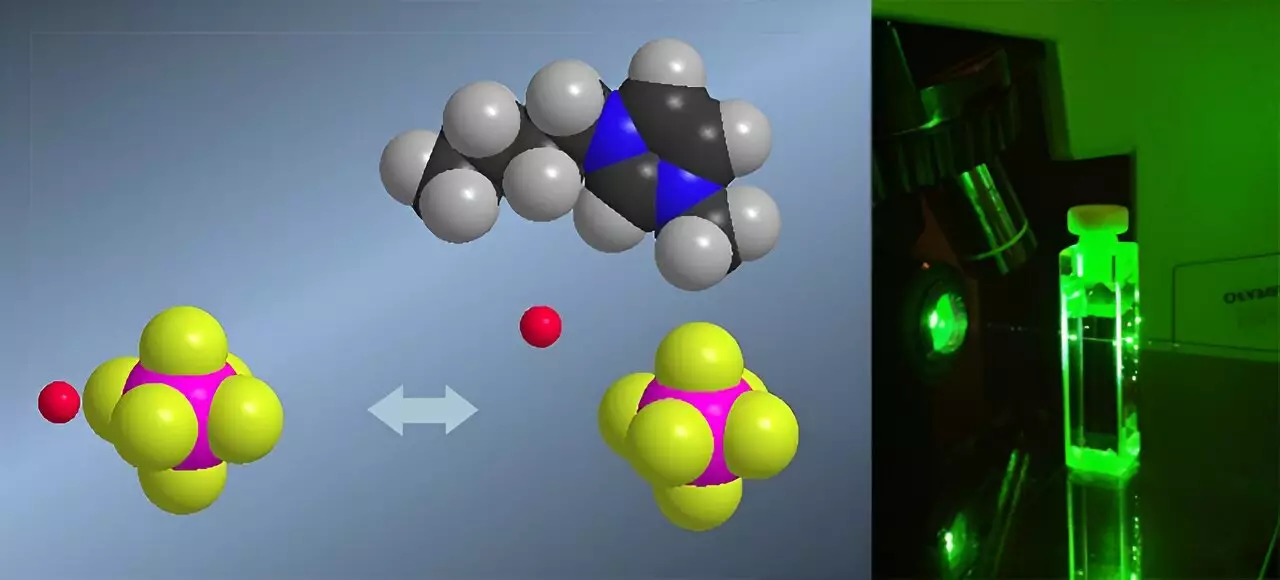The landscape of chemical research is constantly evolving, yet ionic liquids have remained enigmatic in many respects due to the limitations of traditional measurement techniques. These versatile solvents, characterized by their organic salts that are liquid at room temperature, exhibit extraordinary acidity levels—up to 100 million times more intense than water. But capturing this super-acidity has long been a challenge because standard pH measurements are ineffective in such media. Now, a pioneering study at the University of Liège uncovers a transformative approach: leveraging Raman spectroscopy to determine the acidity of ionic liquids via Hammett acidity functions. This innovation not only overcomes technical hurdles but also promises to unlock a deeper understanding of these complex solvents, potentially triggering a paradigm shift in fields ranging from catalysis to energy storage.
Beyond Traditional Techniques: The Promise of Raman Spectroscopy
Historically, UV-visible spectroscopy served as the primary tool for assessing acidity via Hammett functions, but it was hamstrung by the necessity for optical clarity and interference from colored indicators. Ionic liquids, often opaque or with complex optical properties, rendered UV-based measurements unreliable. Raman spectroscopy introduces a game-changing alternative. Unlike UV methods, it does not depend on the transparency of the medium nor require potentially interacting dyes. This capability significantly reduces measurement errors, giving scientists a more direct and precise window into the proton activity within ionic liquids. Aurélie Rensonnet of the University of Liège emphasizes that this technique’s robustness paves the way for more accurate, in-situ analysis—crucial for understanding reactions that occur under real-world operational conditions.
Impacts on Science and Industry
Understanding acidity at such extreme levels is not merely an academic pursuit. The ability to quantify protons in ionic liquids is essential for optimizing catalytic processes, developing better electrolytes for batteries, and improving biomass depolymerization methods. With accurate acidity measurements, chemists can better tailor conditions for these processes, leading to higher efficiency and sustainability. Moreover, this technique allows researchers to estimate the energy transfer involved in moving protons from water to ionic liquids—a key piece of information for computational chemists modeling these interactions. Such synergy between experimental and theoretical work accelerates innovation, offering targeted pathways to engineer ionic liquids with desired properties.
Cédric Malherbe of ULiège underscores the breadth of applications, from harnessing super-acidic solvents for renewable energy to advancing green chemistry initiatives. This breakthrough thus embodies a significant step forward, promising to catalyze new discoveries and practical applications that could redefine how we utilize ionic liquids in industry and environmental solutions.
The advent of Raman spectroscopy in measuring ionic liquid acidity heralds a new era, where scientists are no longer confined by the limitations of traditional techniques. This advancement enables a more nuanced understanding of these spectrally complex solvents, giving researchers the tools to explore their full potential with unprecedented clarity. As chemical industries increasingly rely on ionic liquids for sustainable, efficient solutions, mastering their acidity becomes imperative. The University of Liège’s innovative approach stands out as a bold leap forward, signaling a future where the mysteries of ionic liquids are decoded with precision, paving the way for revolutionary applications across science and technology.

